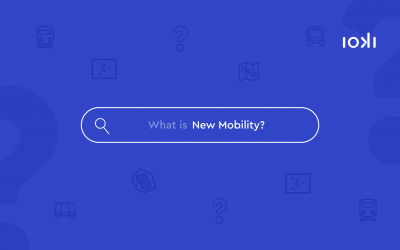From demand-oriented to supply-oriented transport planning…
When looking at these different trends and tendencies in transport planning, it is striking: While in the beginning all solutions were demand-oriented and thus designed to react, a supply-oriented and thus acting approach prevailed at the latest with the change to goal-oriented transport planning. With this paradigm shift, the user also moved more and more into the centre of planning. In this era of transport planning, the declared goal is to influence behaviour by means of user-centred offers and thus contribute to shifting or even avoiding traffic.
But the classic, goal-oriented model reaches its limits when it comes to short-term adjustments. Even if the individual planning steps and phases – in total there are five, namely: pre-orientation, problem analysis, measure investigation, consideration and decision as well as implementation and impact control – are supply-oriented and take place under feedback, they are nevertheless in a cascading relationship to each other. As a rule, the solutions are not thought of in their entirety, but are approached individually for each means of transport. This lack of a «holistic view» continues arbitrarily in the cascading approach: instead of developing concepts for entire regions and thus for overarching problems, many plans are still limited to individual, delimited areas.
The result is transport solutions that keep the user in mind, but always react to his or her actual needs.
This, however, fails to meet our current demand for mobility. Or to put it another way: our current understanding of mobility requires an optimal transport mix tailored to each specific region – which, by the way, can never be static in a changing world.
…all the way to agile transport planning
The formulation of this premise resembles the birth of agile transport planning: the cascade-based and thus vertical planning is replaced by horizontal planning consisting of continuously alternating cycles of development and testing. The point of each cycle is the user himself. As a result, it is possible to plan transport that is not only supply-oriented, but essentially, above all, demand-oriented.
This is because the short, partly interlocking cycles not only allow the optimal fine-tuning of a mobility offer in the long term, but also the short-term intervention in existing and planned operations.
All of this is made possible by direct customer feedback as well as the wealth of data that is available today and that can be used to permanently evaluate the offer. The more precise the knowledge about the status quo of the mobility situation in a specific area or a selected region, the more efficiently the problem, solution approaches and offer options can be planned in advance. Precise knowledge about the actual mobility needs of the population is essential.
In the form of data-based mobility analyses, new operations can thus be planned in an agile, precisely fitting and data-based manner, and existing services can be optimised according to demand.



